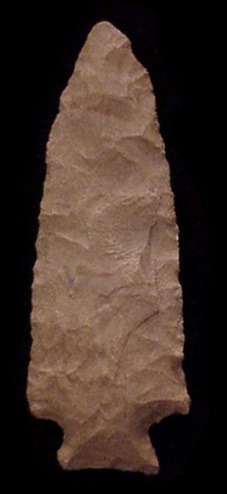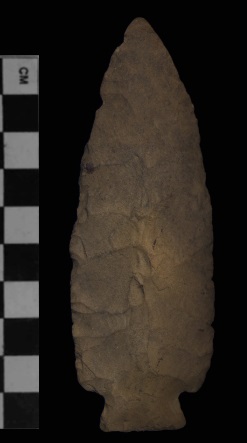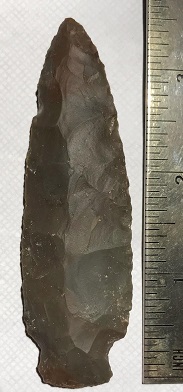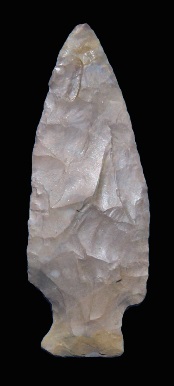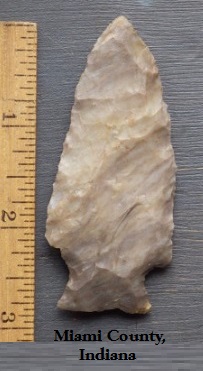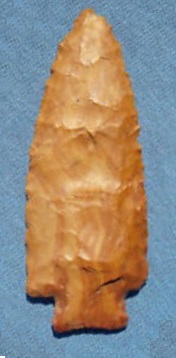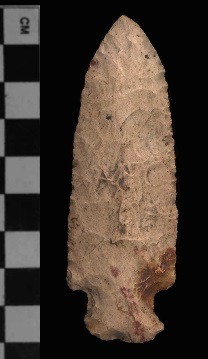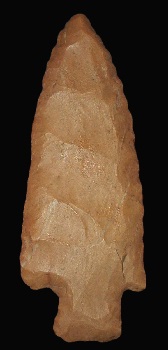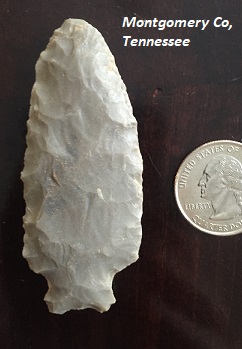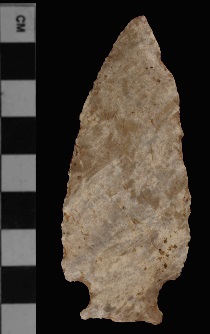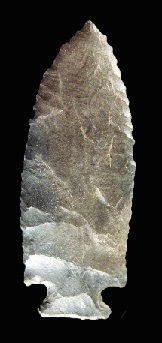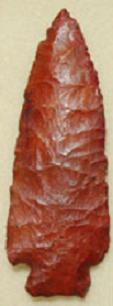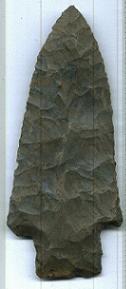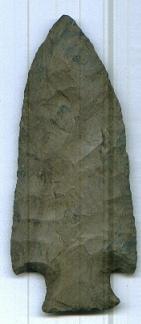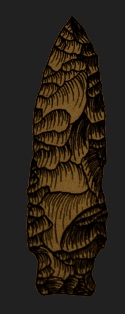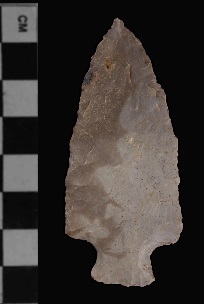Outline is Representative of Size and Shape:
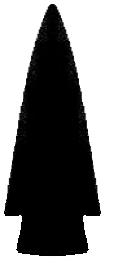
Name Details:
Identified By: Madeline Kneberg
Named For: Type Site County
Date Identified: 1956
Type Site: Eva Site, Benton County, Tennessee
Identified By: Madeline Kneberg
Named For: Type Site County
Date Identified: 1956
Type Site: Eva Site, Benton County, Tennessee
Point Validity:
Valid type
Kneberg was a prominent anthropologist and professor at the University of Tennessee. She is most recognized for her excavations through-out the Tennessee River Valley. This type was named in a professional publication and has many professional references. This is considered a valid type.
Benton Stemmed
Cluster: Benton Stemmed Cluster Description of Physical Characteristics and Flaking Pattern:
This is a medium to very large (2.75 inches or larger) expanding stemmed point with an elliptical to flattened cross section. The blade is excurvate and commonly beveled. The shoulders are weak and range from horizontal to upward angled. The stem is broad and may range from straight to slightly expanding. The base is primarily straight, but may range to slightly concave. The stem and basal edges are steeply beveled. The base is generally straight, but may have a slight concave. This point primarily has a random flaking pattern, but oblique flaking may be seen.
Size Measurements:
Length - 45 to 170 mm (65 mm average), Stem Length - 8 to 11 mm (9 mm average), Blade Width - 25 to 49 mm (29 mm average), Stem Width -16 to 30 mm (17 mm average), Thickness - 5 to 9 mm
Length - 45 to 170 mm (65 mm average), Stem Length - 8 to 11 mm (9 mm average), Blade Width - 25 to 49 mm (29 mm average), Stem Width -16 to 30 mm (17 mm average), Thickness - 5 to 9 mm
Commonly Utilized Material:
Additional Comments:
This type is similar to the Stemmed Kirk, but this type is commonly beveled which is not as common on the Kirk type.
This type was originally dated as an Early Archaic period type by Madeline Kneberg. However, many excavations since that time has placed this type as a Middle Archaic period point (Schroder, 2011 W18).
This type is similar to the Stemmed Kirk, but this type is commonly beveled which is not as common on the Kirk type.
This type was originally dated as an Early Archaic period type by Madeline Kneberg. However, many excavations since that time has placed this type as a Middle Archaic period point (Schroder, 2011 W18).
Distribution: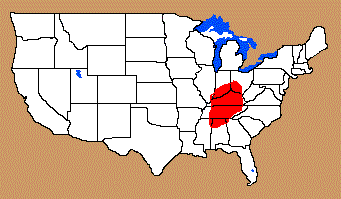
Distribution Comments:
These points are most commonly found in the Tennessee River Valley and into the mid and lower Ohio River valley.
These points are most commonly found in the Tennessee River Valley and into the mid and lower Ohio River valley.
Age / Periods:
Date: 6,000 - 4,000 B.P.
Cultural Period: Middle Archaic
Glacial Period: Middle Holocene
Culture:
Date: 6,000 - 4,000 B.P.
Cultural Period: Middle Archaic
Glacial Period: Middle Holocene
Culture:
Age Details:
This point is part of the Benton Complex.
This point is part of the Benton Complex.
Other points in this cluster / Related / Associated Points:
Big Sandy, Benton Blade, Benton Bottleneck, Benton Broad Stem, Benton Narrow Blade,, Benton Double Notch, Buzzard Roost Creek, Elk River
Big Sandy, Benton Blade, Benton Bottleneck, Benton Broad Stem, Benton Narrow Blade,, Benton Double Notch, Buzzard Roost Creek, Elk River


